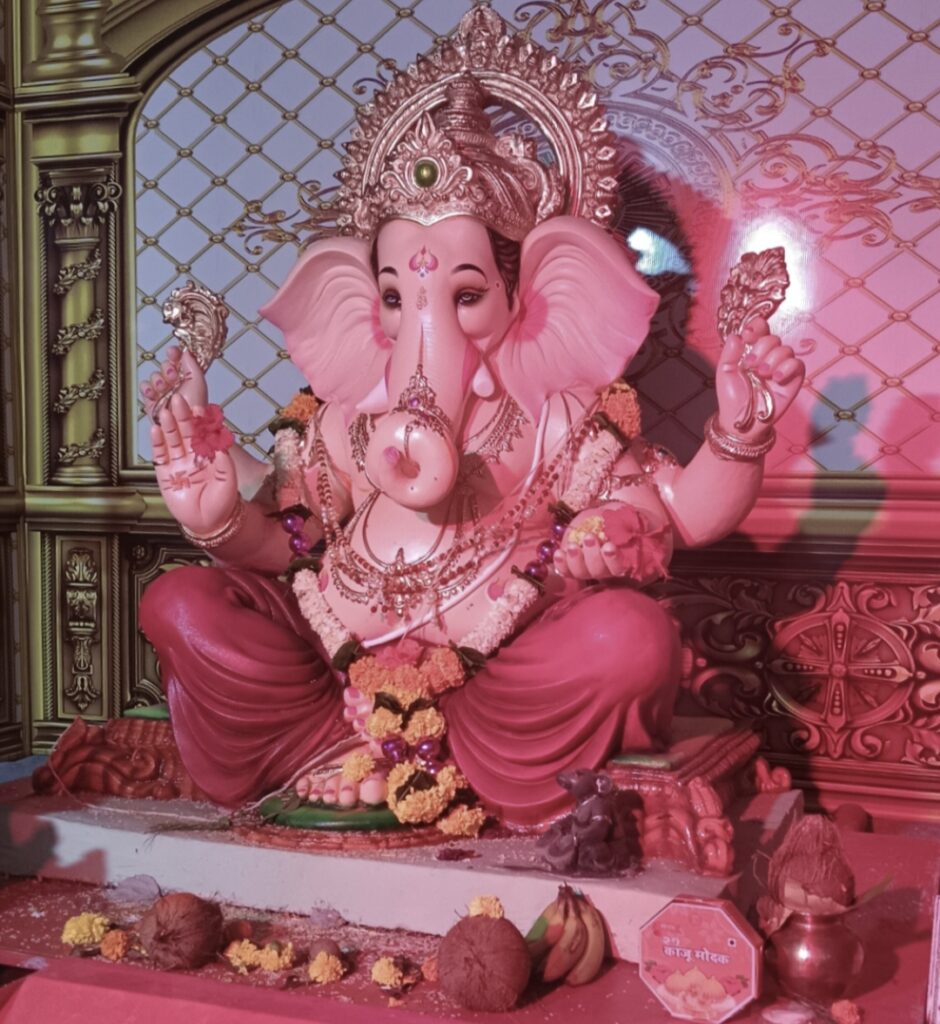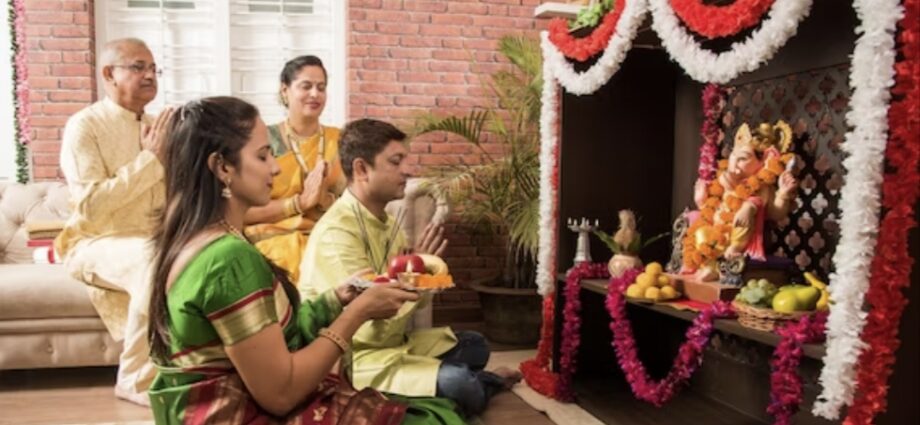Mumbai, Sep 10: With the increase in efforts to match the magnificent festival celebrations of Mumbai city, people living in rural Maharashtra are now worried that they will lose the cultural traits of their own Ganpati Mahotsav.
For the past few years, there has been an increase in the initiative to recreate and match the levels of Mumbai’s celebration of the festival, which involves attractive, vivid decoration and deity visuals.
“Earlier in olden times in our village, the celebration of Ganesh Chaturthi had to do with artistry, like the use of coconut tree leaves and even idols made up of mud and other natural things, whereas today everything is just at hand with modernization,” said seventy-year-old Surekha Rane, from Borthade village in Ratnagiri district. Widowed in 2017, she lives alone in the family home. She has three sons who are all in Mumbai and who visit during Ganpati. Surekha has been bringing the idol home for 45 years.
Local artisans are also affected by this rush to copy big city designs and decorations, and they find it difficult to keep pace with the market in the city.
The notable change in the preparation of Ganesh Chaturthi is the reduction in the cultural aspects of the preparation, such as folk music.

(Source: Google)
In villages, a week before the commencement of the festival, communities used to come together and enjoy the traditional bhajans, as they were at the heart of preparing for the festival.

(Credit: Shruti Jadhav)
Today it is mostly canned music, DJs, and huge speakers, and dance music from Bollywood has become a great favourite, jostling for time with the more traditional Ganpati songs.
Even worse are the materials used to decorate the makar or the place where the idol is installed. Earlier it was banana and coconut leaves and fronds, with diyas to light up the area. Now it is thermacol and plastic, and strings of imported fairy lights, often making the place look garish.
48-year-old Shridhar Mistry who stays on the outskirts of Borthade, and who has been making idols for as long as he remembers, having taken over the business from his father, laments that many customers now want the pieces coloured and designed according to city trends. “Earlier people took what I made happily. Now they have demands. Make the idol in a pose like Lord Shiva or Hanuman. Or make the idol like those in Mumbai. And they get upset when I cannot do that”.
Another point of contention is that people expect that inflation will pass by the village simply because Mistry continues to use mitti for his creations. They keep negotiating and trying to bring prices lower. As it is, says Mistry, they are low.

